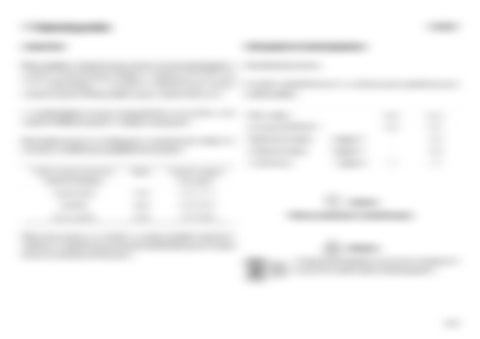11 Operating media
Coolant
Coolant fluid
Water quality for coolant preparation
The preparation and monitoring of coolant in inter-cooled engines is especially important because corrosion, cavitation and freezing can lead to engine damage. Use as coolant a mixture of a cooling system protective liquid (anti-freeze, ethylene glycol based) and tap water.
Use preferably tap water. If an other available fresh water is used; the values given below must not be exceeded.
In tropical climates, where anti-freeze availability may be limited, use a corrosion inhibitor to protect the engine cooling system.
Water quality
6.5
8.5
The concentration of the cooling system protective liquid in the coolant should not fall below/exceed the following limits:
Chloride ion content
[mg/dm3]
–
100
Sulfate ion content
[mg/dm3]
–
100
Total hardness
[degrees]
3
12
Cooling system protective liquid (Anti-freeze)
Water
Protection against freezing to
max. 45 vol%
55%
-35°C (-31°F)
40 vol%
60%
-28°C (-18°F)
min. 35 vol%
65%
-22°C (-8°F)
The protective liquid concentration must be maintained under all circumstances. Therefor if coolant must be added always use the same mixture of anti-freeze and tap water.
min.
pH-value at 20°C (68°F)
max.
Caution Never use sea-water or brackish water.
Warning Cooling system protective liquids must be disposed of in accordance with environmental regulations.
109





